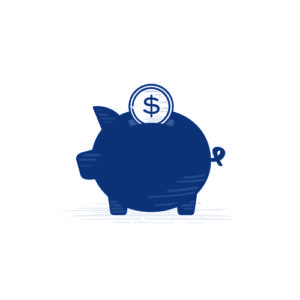Picking up Pennies

At Hill Investment Group, we’re dedicated to putting the odds for the best possible returns in your favor, leaving no basis point behind. Since every client is unique, the method to accomplishing this goal is multifaceted. I have talked to dozens of other prominent investment advisors about how they systematically handle these issues for their clients.
The answer I get 90+% of the time is some combination of, “We are not doing X because… it is too much work, clients don’t know the difference, the benefit is small, etc.”. As your fiduciary, that doesn’t sit well with us. Our obligation is to seek the best solutions we can find for our clients…no matter what.
Therefore, at HIG, we’ll continue to pick up the pennies. Over the coming months, we plan to highlight how we do that and what the impact can be on your wealth over time. We will discuss the following topics, starting with the level of cash we hold in our clients’ portfolios.
- Volume 1 – Keep Cash Balances Low (Better Chance for Higher Returns)
- Volume 2 – Asset Location (Reduces Taxes)
- Volume 3 – Using ETFs (Reduces Taxes)
- Volume 4 – Trading ETFs in Competition (Reduces Trading Costs)
- Volume 5 – Number of Funds and Not Auto-Reinvesting Dividends (Reduces Trading Costs)
- Volume 6 – Tax Lots and Tax Loss Harvesting (Reduces Taxes)
- Volume 7 – Summary (Total Impact)
Most investment advisors and hold between 5-10% of their client’s portfolios in cash for convenience. The “better ones” out there will hold 2-4% cash. Holding a large buffer of cash means the advisor can be a bit lazier in monitoring and trading client portfolios. This buffer comes at a cost. It’s called “cash drag” because, in general, cash doesn’t earn as high a return over time as investing in stocks or bonds. Therefore, for every $1 of cash you hold, there is an opportunity cost… which depending on how much cash you hold, could be massive.
We don’t want our clients to incur that cost, and thus, HIG keeps cash levels well below 1%, ideally around 0.5% (unless the client has recurring withdrawals). Maintaining cash levels below 1% requires diligence and a commitment to active monitoring. It’s easy to keep a significant amount of cash on hand, but it’s far more challenging—and ultimately rewarding—to deploy those funds into investments that generate meaningful returns.
We want the mutual funds and ETFs we invest in to embody the same approach. The average mutual fund holds between 3-5% cash, causing meaningful cash drag to their investors. The funds we recommend generally keep cash in the 0.1-0.3% range. By minimizing cash drag in your accounts and in the funds you hold, your portfolio more closely reflects the asset allocation and the corresponding risk profile you set up with us, that we agree to maintain on their behalf.
The impact of reducing cash drag can be significant. On average, stocks outperform cash by 6% annually. This means that an additional 5% in cash could lead to a 0.3% reduction in returns annually. While it might seem like a small fraction, due to compounding, the deficit can accumulate significantly over time. For every $1,000,000 invested, a 6.0% vs 5.7% return over 30 years represents a difference in wealth of ~$450,000.
At Hill Investment Group, our dedication to maximizing returns sets us apart. Our commitment to picking up every basis point is part of a broader philosophy. We understand that the little things, the pennies, add up to create meaningful gains for our clients. Through careful management and a relentless pursuit of opportunities, we believe these small gains will culminate in a substantial increase in overall returns.
Stay tuned for more insights in the coming months as we continue to share how these small gains add up to significantly impact our clients’ portfolios.


